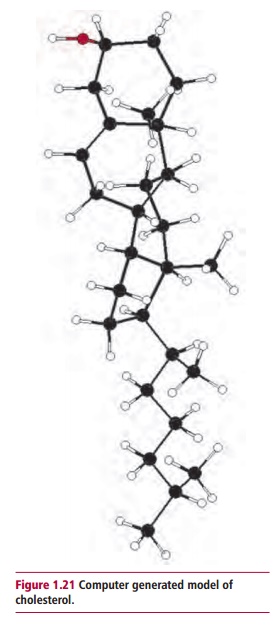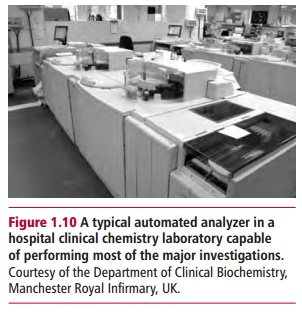Chapter: Biology of Disease: The Nature and Investigation of Diseases
Evaluation of Laboratory Tests
EVALUATION OF LABORATORY TESTS
The clinical tests used in hospital laboratories
undergo thorough evaluation prior to usage in a laboratory. A number of factors
are assessed including accuracy, precision, reliability, practicality, safety,
ease of use, duration and cost.
Accuracy refers to the
ability of a method to give results that are close to thetrue value of the
substance (analyte) being measured. The results obtained from laboratory tests
may be based on subjective assessment as, for example, following the
microscopic examination of a tissue section obtained after biopsy during the
investigation of a possible malignancy. These types of assessments rely heavily
on the experience of the practitioner in recognizing and identifying key
changes. Many tests, however, provide quantitative data such as blood glucose concentrations
in diabetics, or the concentration of thyroid stimulating hormone (TSH) in the
serum of a patient with suspected hypothyroidism. The interpretation of many
clinical tests for analytes requires referral to its reference range.
The precision
of a method refers to its ability to provide the same result every time it is
used. Precision is assessed by repeatedly measuring samples taken from a single
specimen and from batches of samples. The variation in the results may be
assessed by calculating statistical parameters, such as standard deviation (SD)
or coefficient of variance (cv).
Often substances in biological materials are present
in extremely low concentrations and it may be necessary for the clinical test
to detect such low concentrations of analyte and, indeed, monitor changes in
its concentration. The analytical
sensitivity of a method is its ability to detect small amounts of the
analyte under investigation. A related term is the limit of detection, which is
the smallest amount of a substance that can be distinguished from the zero
value. Biological material contains many components and some of these may
interfere with the test being used, giving rise to unreliable results. For this
reason, the analytical specificity
of a test, that is, the ability of the method to detect only the test
substance, may be determined.
In addition to analytical variation, test results are
subject to biological variation. The discrimination between normal and abnormal
results can be influenced by a number of biological factors. These include the
sex and age of the patient, his or her diet, the time of collecting the sample,
the posture adopted, whether the patient is stressed or had been exercising,
the menstrual state of a female patient and whether she is pregnant, whether
the person is taking drugs (legal or illegal). All these influence the results
of the test. Thus, for example, plasma iron and urate values are higher in male
than female patients; the activity of serum alkaline phosphatase is greater in
growing children than in adults. Variations in diet may affect concentration of
certain analytes, such as cholesterol (Figure
1.21). The values of some analytes, such as the concentration of cortisol
in the plasma, show a diurnal variation. Blood should be collected from a
seated patient since differences in posture at the time of blood collection can
influence the concentrations of a number of analytes including the
concentration of plasma proteins. Stress influences the release of a number of
hormones, such as adrenaline and cortisol, while the concentrations of serum
analytes, like creatine kinase and lactate, increase following exercise. The
concentrations of ovarian hormones are strongly influenced by the menstrual
cycle and corticosterone is known to vary by as much as 50% during different
stages of the cycle. The nature and concentrations of many hormones change
during pregnancy. Lastly, some drugs can influence results. For example,
patients on estrogen-containing oral contraceptives often have an increased
concentration of total plasma protein.

Analytical methods need to satisfy certain criteria
to ensure they are practical and suitable for use in the laboratory. New
methods are introduced into the laboratory only if they offer significant
advantages over existing methods. New methods are assessed for their speed,
that is, how many specimens can be processed in a given time and how long it
takes to produce a result. The time a test takes may, of course, be vitally
important in the care and treatment of a patient when urgent intervention is
necessary.
Hospital laboratories have witnessed an increasing
workload in recent years, and although they are helped by automation (Figure 1.10), they process very large
numbers of specimens on a daily basis. Like all organizations, they have a
finite budget and it is vital that the cost of tests is kept to a minimum. As
well as direct costs, such as those for reagents, equipment and labor, there
are indirect costs, such as the heating and lighting of laboratories. Safety is
also of importance and biological, chemical, mechanical and electrical hazards
associated with the method need to be assessed to ensure the safety of hospital
laboratory staff.

Related Topics